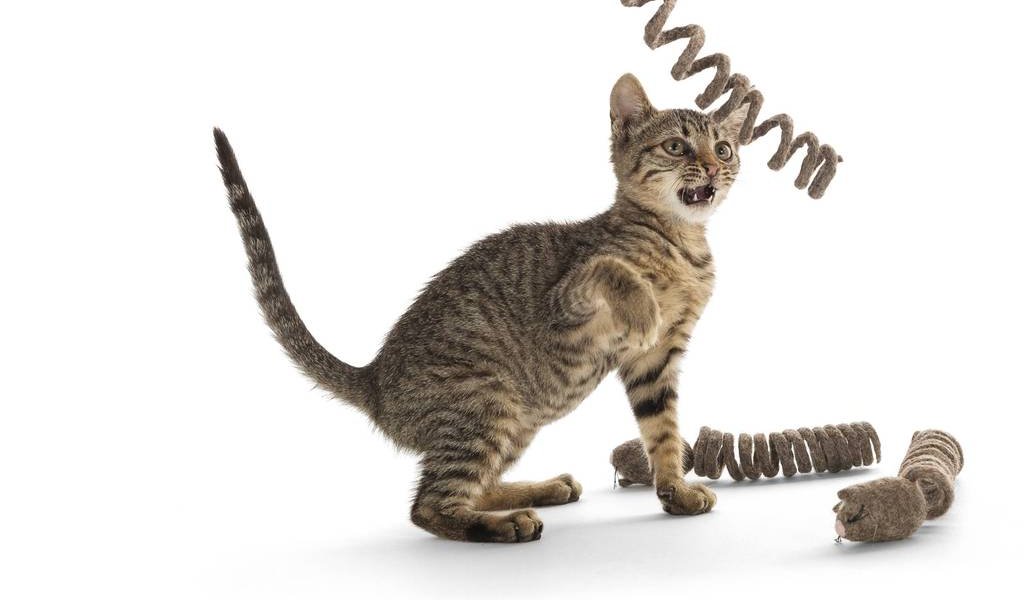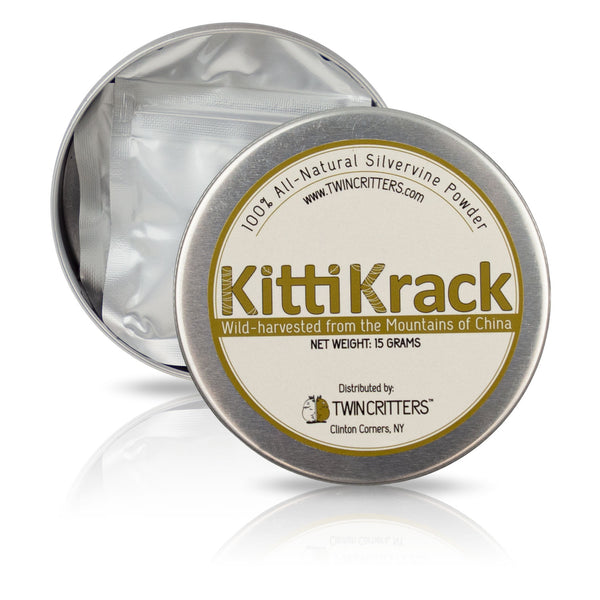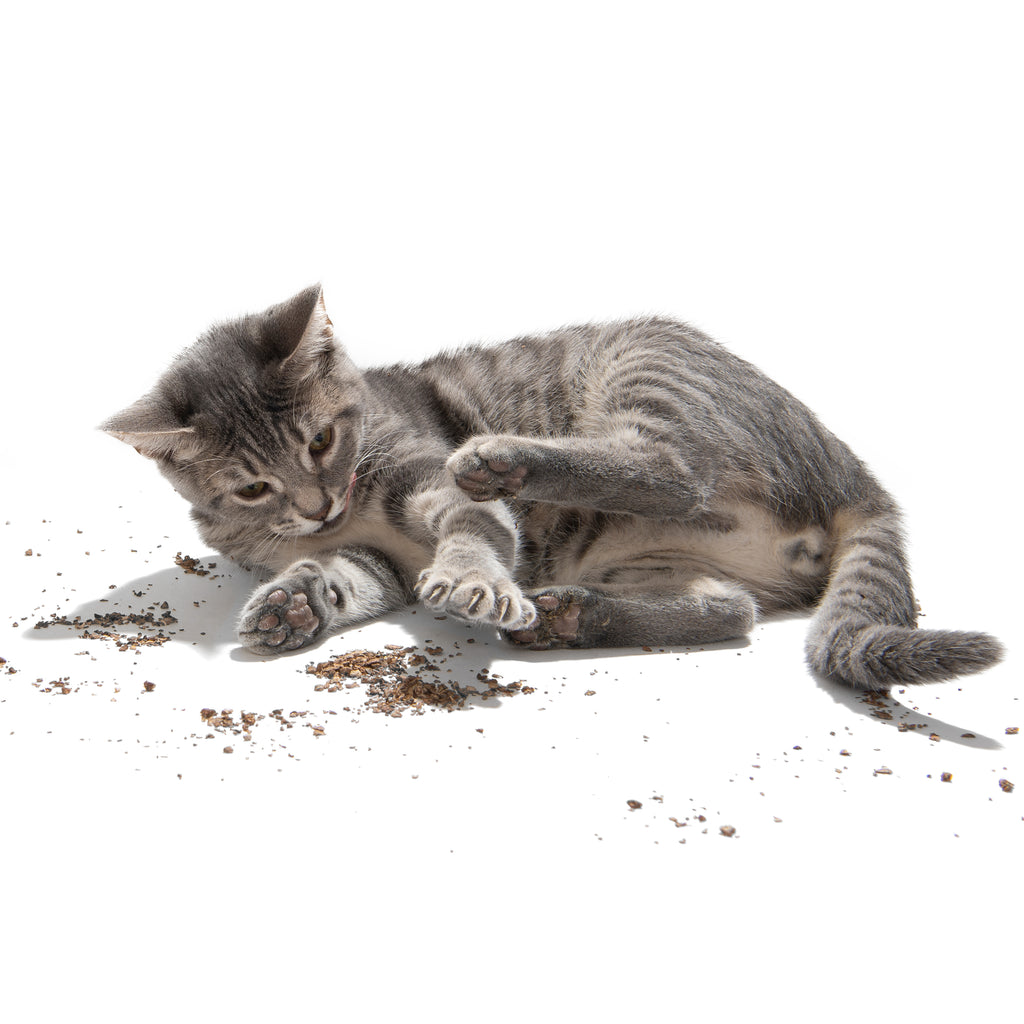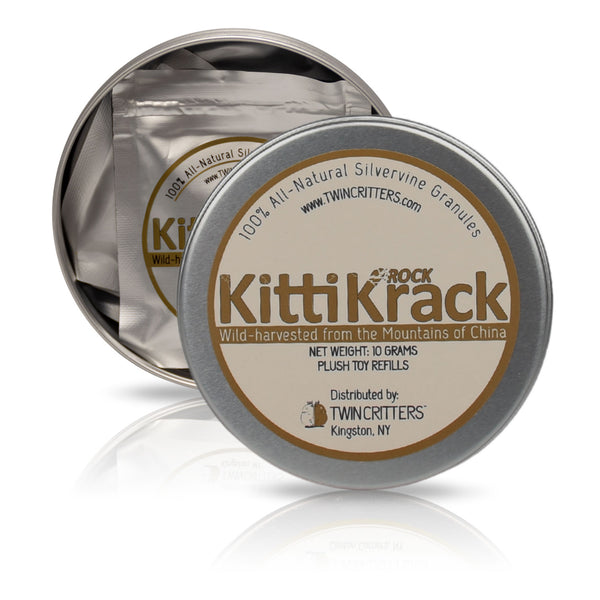Surviving Quarantine with Your Cat

You’re probably spending more time at home with your cat during the COVID-19 pandemic. Some cats may be thrilled to have access to your lap 24/7, while others are missing their time alone. We’ve compiled a few ideas for how you can make the most of your time together and keep everyone happy and purring! As an added benefit, once the pandemic restrictions are eased, you can continue to enrich your cat’s life with the new routines you’ve created during your extra time together.
Wake up together
Consider sharing your morning coffee ritual with your cat—you with a mug of your favorite brew and your cat with a KittiBuzz silvervine and catnip plush coffee cup. Your morning joe will get you charged for the day, while the sleek KittiKrack-infused toy will wake up your cat’s inner kitten. KittiKrack is made from 100% natural, wild-harvested silvervine powder and contains numerous powerful olfactory attractants that your cat won’t be able to resist. For more information about silvervine, see our article.
Initiate regular interactive playtime
If you’re working on a computer at home, your cat may be curious about the keyboard or mouse, or even what’s on the screen. To discourage your well-intentioned feline coworker from “revising” your emails or interrupting your virtual team meetings, consider scheduling a 15-minute playtime before you start work and again at the end of the workday. Even in non-quarantined times, cat behavior experts recommend you provide regular twice-daily interactive play sessions that capture your cat’s attention to prevent boredom and encourage exercise.1 If your cat likes to bother you during the night, you might want to add an additional playtime right before you go to bed to help both of you sleep through the night.1
Toys that require your cat to chase and pounce help it expend excess energy and stay fit. Interactive play may also benefit cats with behavior problems by redirecting their attention to a positive stimulus.1 Interactive toys come in a variety of forms, including scratching pads with track balls, crinkly tunnels, and electronic squeaking birds, but if your cat likes to jump and twist, consider the interactive chemical-free KittiChase mice that have long spring tails. A cat that prefers to keep its feet on the ground might enjoy chasing golfball-sized Tenniswools that can be quietly bounced across the floor, or the larger KittiWhack cat scratcher balls with included KittiKrack to get the fun started.
Provide a safe place to nap
After its morning workout, your cat will undoubtedly need a nap. If it isn’t accustomed to having people at home during the day, it may seek a sleeping area that provides more privacy. Soft blankets and afghans strategically placed in quiet areas of the home can provide the sanctuary your furry pal seeks; you can also position an empty box on its side in a less-travelled area of the house. Consider a more permanent cozy hideout such as a handcrafted wool pet cave. Not only does it provide privacy, but it keeps your cat feeling comfortable regardless of the temperature because of wool’s natural insulating properties. Twincritters pet caves are available as classic soft domes or as fun animal-themed hideaways, including koi, sharks, dragons, unicorns, and orcas. Providing a safe and cozy den is especially important since cats can sleep for an average of 15 hours a day.
Stick to a regular feeding schedule
During quarantine, try to maintain a regular feeding routine that corresponds to your normal working hours. For example, if you usually feed your cat twice a day (eg, in the morning and evening), don’t start offering a third meal in the middle of the day just because your cat won’t stop staring at you. Conversely, if your cat is accustomed to eating multiple small meals during the day, don’t start feeding larger portions at each meal or change the number of meals offered. Sticking to a schedule will help prevent your feline friend from gaining unwanted weight; it will also give your cat the security of knowing when to expect a meal, which is especially important for animals that are creatures of habit.
Provide self-directed activities
If your cat seems genuinely hungry between meals but you don’t want to leave dry food out for all-day noshing, consider providing a food puzzle. Food puzzles require your cat to work for a hidden or hard-to-reach treat, which is more similar to how they acquire food in the wild. Solving the puzzle requires mental focus and physical agility, which helps stave off boredom. Although you can buy different types of puzzles from pet product companies, you can also make your own out of simple household items. The American Society for Prevention of Cruelty to Animals (ASPCA) website lists a number of do-it-yourself enrichment projects.2
You can also place a basket of soft toys in a spot where your cat will find it when you are unavailable, for example, during a virtual team meeting. A recent study analyzed data from a questionnaire sent to cat owners that asked them to identify their cat’s behavior when they were away from home or in an area of the house out of visual range of the cat. Cats with no access to toys when left alone were more likely than cats with toys to exhibit separation-related problems, including destructive behavior, urination in inappropriate places, and excessive vocalization.3 You can choose from a variety of TwinCritters toys to encourage kitty self-directed play, including silvervine sardines and unicorns, KittiBlunts, KittiShrooms, KittiDoodi, and KittiTrails. Most of these toys have a refillable pocket for KittiKrack.
Teach your cat a new skill
Being in quarantine together gives you and your cat the perfect opportunity to learn new skills. You may have heard about the use of clickers to train dogs to perform tricks, but did you know that cats can also be clicker trained? Clicker training consists of associating a desired behavior with the sound of a metal clicker, using positive reinforcement such as a treat. To enrich the lives of some shelter cats awaiting adoption, the ASPCA uses clicker training to teach them how to perform stunts related to activities they already enjoy. For example, an athletic cat that likes to jump may quickly learn how to leap through or over obstacles when rewarded with a treat.4 Clicker training can also be used to train your cat to come on command, use a scratching post, roll over, sit up, and use a toilet, to name a few.5
Recognize what’s normal and what’s not
Being at home with your cat during the day is also a good time to learn more about its normal habits. You’ll gain a better understanding of when your cat likes to sleep and when it’s more active, and this knowledge may help you recognize signs of illness in your beloved kitty. For example, if a previously healthy cat starts sleeping through morning playtime or starts hiding under the bed during breakfast or dinner, it may be time to call your veterinarian. Being at home together during the day may also help you identify the source of past inappropriate behavior, such as urinating outside the litter box. If the behavior stops when you’re at home, your cat may be experiencing separation anxiety when you work outside of the house. Most veterinary colleges provide information on identifying and resolving problem feline behavior on their websites; you can also visit the websites for the American College of Veterinary Behaviorists and the American Veterinary Society of Animal Behavior to find a specialist in your area.6,7
TGIF
At the end of the week, when you’re ready to celebrate surviving another seven days of quarantine, consider also rewarding your four-legged companion with a silvervine classic lollipop or mouse lollipop. Lollipops are made of compressed 100% natural silvervine free of additives and preservatives, which makes them perfect for licking. Sit back and relax with your favorite aperitif while your cat unwinds from another week of the “new normal.”
References
- Johnson-Bennett P. Fast forward…stop…rewind…play. In: Johnson-Bennett P, ed. Think Like a Cat. New York: Penguin Books. 2011;101-106.
- Feline DIY enrichment. American Society for the Prevention of Cruelty to Animals website. https://www.aspca.org/pet-care/cat-care/feline-diy-enrichment. Accessed April 27, 2020.
- de Souza Machado D, Oliveira PMB, Machado JC, Ceballos MC, Sant’Anna AC. Identification of separation-related problems in domestic cats: a questionnaire survey. PLOS ONE. 2020;15(4):e0230999. https://doi.org/10.1371/journal.pone.0230999
- Clicker training has cats jumping through hoops. American Society for the Prevention of Cruelty to Animals website. https://www.aspca.org/news/clicker-training-has-cats-jumping-through-hoops. Published September 19, 2016. Accessed April 27, 2020.
- Pryor K. Cat training and management. Karen Pryor Clicker Training website. https://www.clickertraining.com/node/847. Accessed May 2, 2020.
- Find a board-certified behaviorist. American College of Veterinary Behaviorists website. https://www.dacvb.org/search/custom.asp?id=4709. Accessed May 4, 2020.
- Cat behavior consultants. American Veterinary Society of Animal Behavior website. https://avsab.org/behavior-consultant/category/cat-behavior-consultant. Accessed May 4, 2020.








